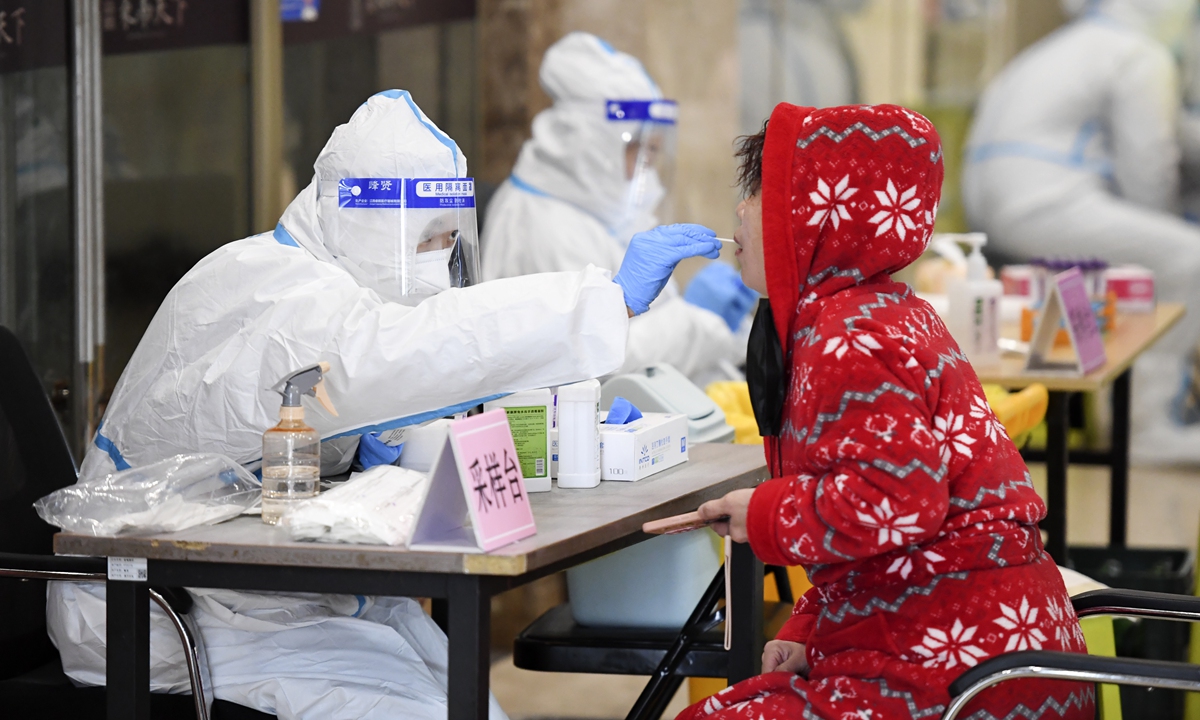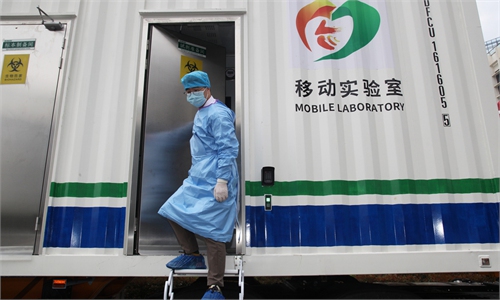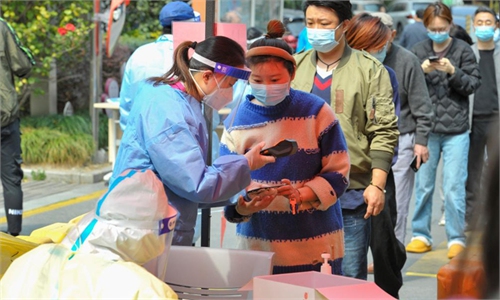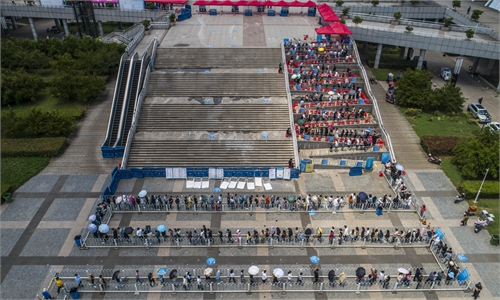China under pressure amid global COVID resurgence, over 40% new cases appearing in surrounding countries and regions

A resident takes the nuceic acid testing in Changchun, Northeast China's Jilin Province on March 13, 2022 as the city has started a new round of citywide testing. Photo: VCG
China is facing mounting pressure to guard against imported infections as new confirmed COVID-19 cases have rebounded globally in the past week with more than 40 percent of cases appearing in areas surrounding China, according to China's National Health Commission (NHC) at a press conference on Saturday.
Starting from December 2021, the COVID-19 pandemic entered its fourth peak, and the number of reported cases per week has exceeded 10 million for 11 consecutive weeks, which is still at a high epidemic level. In particular, since the beginning of this year, the epidemic situation in China's neighboring countries and regions has been increasingly volatile. Since March this year, the average number of daily imported cases in China has exceeded 200.
From March 1 to 18, more than 29,000 COVID-19 cases were reported across 28 provinces and regions in China, including more than 10,000 cases in one province of Jilin, according to officials at the press conference.
As of the end of Friday, 29,127 confirmed COVID-19 cases have been hospitalized nationwide, with more than 95 percent considered mild or asymptomatic cases. The proportion of severe and critical cases is less than 5 percent, one NHC official said.
"On the whole, the local epidemic situation in China is still in the development stage, and many provinces and regions are fighting against the Omicron epidemic in multiple cities at the same time." the official said, noting that the national epidemic prevention and control situation remains grim and complex.
"Epidemic prevention and control is a priority for the country," Mi Feng, a spokesperson from the NHC, said. While stressing the precise anti-epidemic work under the dynamic zero-COVID policy, Mi requested that the public and the relevant departments resist a "relax, rest, wait and see," attitude and not show fatigue in the face of the epidemic battle, no fluking, slacking, noting persistence is victory.

Teachers and students fall in line for nucleic acid tests at a school in Huai'an, East China's Jiangsu Province on March 15, 2022. China reported more than 5,000 new infections, including silent carriers, that day. Photo: VCG
The latest version of diagnosis and treatment protocol does not signal a relaxation of the prevention and control policy, but stressed a more precise approach in the anti-epidemic work based on China's anti-epidemic practice in the past two years, said the NHC.
As the anti-epidemic efforts take time to curb the outbreak, Chinese top epidemiologist Wu Zunyou at the press conference also called on the public to adjust their attitude and fully support normalized epidemic prevention and control measures.
While big data facilitates epidemiological surveys, timely and comprehensive nucleic acid testing in designated scale helps uncover infections, said Wu, noting community infections can usually be cleared away after three to four rounds of testing.
Although amid recent Omicron outbreaks, people fully vaccinated still face an increased risk of infection, current studies showed that the Omicron variant has not developed a complete immune escape mechanism from existing vaccines in China.
That is, if we complete the full vaccination, we can still effectively reduce the risk of hospitalization, severe syndrome and death caused by the Omicron variant. If we are vaccinated with the booster, we can also effectively reduce the risk of breakout infection caused by the new variant. Therefore, existing vaccines and booster shots are still effective against the Omicron variant, Zheng Zhongwei, another official of the NHC and an expert on vaccine, said at the press conference.
More than 1.239 billion Chinese, or 87.85 percent of China's total population, have been fully vaccinated against COVID-19 as of Friday, according to the NHC. However, 52 million people aged 60 and above have not been fully vaccinated, and the proportion of the group with full vaccination and booster is low.
Of the two new deaths reported on Friday in Northeast China's Jilin Province, one was at advanced age and the other was over 60 years old, both with serious underlying health problems. One of them had not been vaccinated, according to the NHC at the press conference.
Both patients showed only mild COVID-19 symptoms and the immediate cause of death was due to their underlying diseases, said the NHC official.
Citing global statistics which showed that the average age of death of COVID-19 patients is over 70 years old, the NHC stressed the rate of vaccination among the elderly should be further raised.




